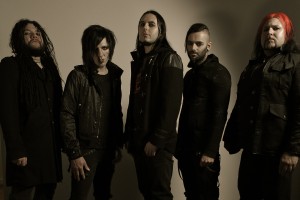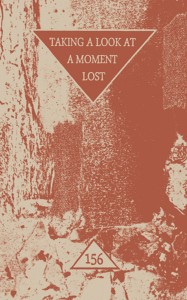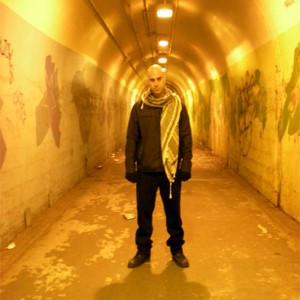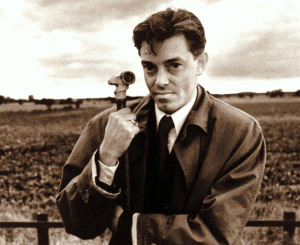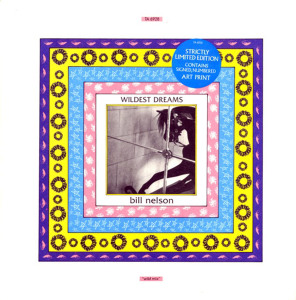(HOT RECORDS; 2014)
Roman Remains is the electro-industrial pop side project of Leila Moss and Toby Butler of the Duke Spirit. With a sound that draws from the vanguard of the multiple genres that form the basis of their music, Butler and Moss weave an elegant and mysterious veil throughout their eleven track debut, ZEAL. The duo uses an old-school industrial base of such groups as Gravity Kills and God Lives Underwater (both bands that are much-loved and much missed by this scribe), augmenting that with an updated electronic sound that leans heavily on the pop sensibilities of (recent tour mate) Gary Numan and a voice that isn’t too dissimilar to Siouxsie Sioux. Mixing everything together, the result is something new, relevant and distinctly original.

The first track, “This Stone Is Starting To Bleed,” has that Gravity Kills vibe, while also reminding me somewhat – and I really hate to make this comparison – of the pop tendencies of Brian Warner, minus his “shock-for-shock’s-sake” lyrics and persona. The song also introduces an Arabic theme to the music, which is repeated throughout the album, adding to the mysterious feel. The poppier side of the music drives “Tachycardia,” a song whose melody wouldn’t seem out of place on a tune by Britney or Shakira, even if the lyrical nuances would be lost on either (well, maybe not Shakira… she seems to be fairly intelligent but, you get my drift). “Nest In Your Room” features an ominous, slightly ghoulish lyric (“Hold a thousand mirrors up to your nose/Comb your hair with the scent of a rose”) as the guitars and synthesizers buzz into a hive-like drone. This one definitely has the underlying menace that has always been present in Numan’s music. A dark, Gothic ballad, “Agrimony,” features uncharacteristically gauzy vocals from Moss amidst a minimalist backdrop, the various parts morphing into a very creepy whole.
“Apoidea” ups the machine quotient, with more bleeps and wheezes and a heavily synthesized percussive track. With everything kind of going off at once, the tune sounds very disjointed but, a closer listen shows it to be a calculated risk amongst the other, more “standard” tracks. The next track, “Thirsty As a Truck,” has a calliope-like rhythm alongside an odd guitar signature and lyrics to match. “Gazebo” is a slow burning, taut ballad. The beautiful vocals and chiming guitar adds to the mesmerizing tension of the track. The Arabic influences are more prominent on “Influence and Atlas,” which features strong Middle Eastern percussion. The guitars and vocals also evoke the sound and feel of the region’s music. The occasional odd (as in, out-of-place) synth bloop actually distracts from the potential power of the track. A minor complaint for an album of such musical and lyrical depth.

There’s a sort of sexy menace that permeates “Animals.” The track is a fairly solid mash-up of Creatures-era Siouxsie vocals (not to mention the Budgie-style berating of several percussion instruments), some “clanging” guitar chords and a strange, modernistic take on traditional Hip-Hop. “Vulture Bird” starts with a serious horror movie minor key introduction and things just get weirder and more violently ominous as it moves along. Along with “Nest In Your Room,” this is probably my favorite (at least, as I’m writing this). A throbbing synthesized bass line and a pumping-heart drum beat, again, takes “It End In Other Ways” to a dark, dark place, a modern equivalent of the Gothic Darkwave music that all the hip young ghouls danced to in the graveyard a few years back. There are a lot of comparisons to be made but, in the end, ZEAL is emphatically, above anything else, a Roman Remains album. I, for one, can’t wait to hear their next progression.




